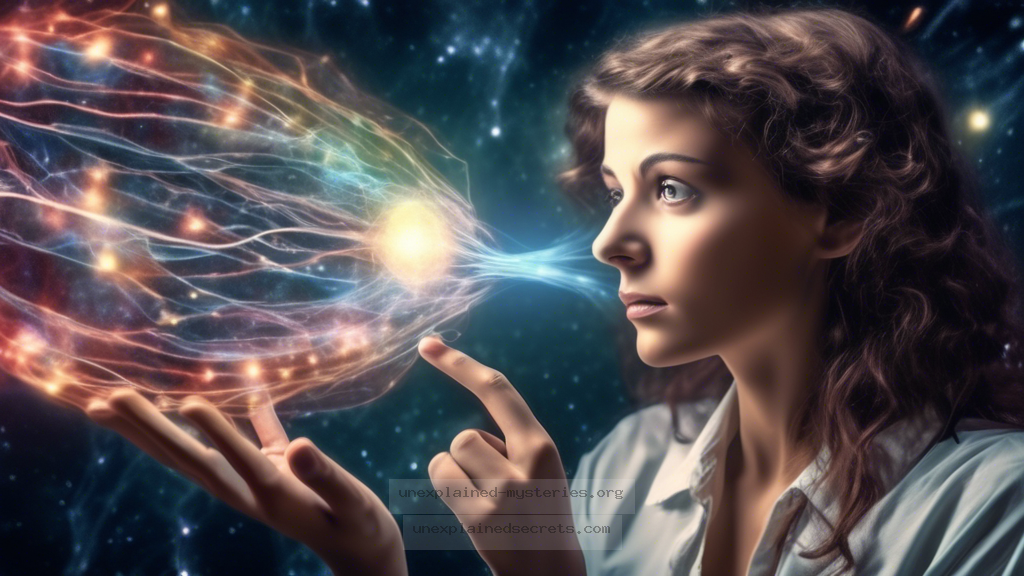Can Telepathy Be Proven Through Scientific Research and Evidence?
Can Telepathy Be Proven Through Scientific Research and Evidence?
Throughout history, the concept of telepathy has fascinated humans, igniting imaginations and spurring extensive research into its validity. The idea that thoughts can be communicated from one mind to another without any known human senses seems to straddle the realms of science and the supernatural. What if telepathy could be proven through rigorous scientific research? This question is not just a curiosity; it holds implications for understanding human consciousness, interpersonal relationships, and even potential applications in technology and therapy. In this blog post, we will delve into the scientific exploration of telepathy, examining historical contexts, current research, and the implications of these findings.
Historical Context of Telepathy Research
The term “telepathy” was first coined by the psychologist Frederick William Myers in 1882, combining the Greek words for “distant” (tele) and “feeling” (pathos). Since then, the notion has been a topic of intrigue across various cultures and disciplines. Early psychological experiments in the late 19th and early 20th centuries often involved mediums and séance practices, where individuals claimed to communicate with the deceased. The Society for Psychical Research, founded in London in 1882, aimed to investigate such phenomena scientifically.
One significant historical figure in telepathy research was J.B. Rhine, a psychologist at Duke University in the 1930s. Rhine’s experiments with Zener cards—cards marked with symbols—were designed to test for extrasensory perception (ESP), a category that includes telepathy. His work laid the groundwork for future investigations into psychic phenomena, despite facing skepticism from the broader scientific community.
Core Concepts of Telepathy
At its core, telepathy involves the transfer of thoughts, feelings, or information from one individual to another without any conventional sensory input. This phenomenon is generally categorized under the umbrella of extrasensory perception (ESP), which also includes clairvoyance and precognition. The primary theories attempting to explain telepathy include:
- Quantum Mechanics: Some researchers propose that telepathy may have a basis in quantum entanglement, where particles can be interconnected regardless of distance.
- Neuroscience: Theoretical models suggest that brain waves could potentially transmit information beyond normal sensory boundaries.
- Consciousness Studies: Some scientists believe that telepathy could be a byproduct of a collective consciousness or a shared mental space.
Scientific Evidence and Experiments
Despite the skepticism surrounding telepathy, several studies have attempted to provide empirical evidence. One notable experiment occurred in 1974 when researchers at the University of California, Los Angeles (UCLA), conducted a study involving pairs of participants placed in separate rooms. One participant was shown a series of images while the other attempted to describe what they were seeing telepathically. The results showed a statistically significant correlation in some trials, suggesting that telepathic communication may have occurred.
Another prominent study was conducted by the Princeton Engineering Anomalies Research (PEAR) lab, which operated from 1979 to 2007. The PEAR lab focused on the interaction between consciousness and physical systems, running numerous experiments that yielded results which some interpreted as supportive of telepathy. However, the findings were often met with criticism regarding the methodologies used.
| Study | Year | Findings |
|---|---|---|
| UCLA Telepathy Experiment | 1974 | Statistically significant correlations in image description. |
| PEAR Lab Research | 1979-2007 | Results suggestive of consciousness influencing physical systems. |
Practical Implications of Telepathy Research
If telepathy were scientifically validated, its implications could be profound. In therapeutic contexts, understanding telepathic mechanisms could lead to enhanced methods of communication between therapists and clients, especially in cases where verbal communication is limited. Moreover, advancements in technology could emerge from harnessing telepathic principles, allowing for direct brain-to-brain communication, potentially revolutionizing fields like education and training.
In the realm of personal relationships, validated telepathy could offer insights into emotional and cognitive bonds, leading to deeper empathy and understanding among individuals. Such breakthroughs could also influence conflict resolution strategies, as enhanced communication may lead to fewer misunderstandings.
Alternative Perspectives on Telepathy
While many researchers advocate for the scientific study of telepathy, there are also strong criticisms. Skeptics argue that most evidence for telepathy is anecdotal and lacks rigorous, reproducible results. They often cite the lack of a theoretical framework that can explain how telepathy would function within known laws of physics. Moreover, the influence of biases and the placebo effect in studies can lead to misleading conclusions.
Furthermore, some argue that the human psyche is complex enough that what is perceived as telepathy might instead be intuitive understanding or heightened empathy between individuals, particularly those with close emotional connections, such as twins. This phenomenon is often referred to as “twin telepathy,” where twins claim to share thoughts or experiences.
Common Misconceptions About Telepathy
One common misconception is that telepathy is a supernatural ability that only a select few possess. In reality, if telepathy exists, it may be a latent ability inherent in everyone, much like untapped potential in various skills. Additionally, many believe that telepathy is instantaneous and perfect; however, it may be influenced by numerous factors, including emotional states, environmental conditions, and individual differences in cognitive processing.
Best Practices for Investigating Telepathy
For those interested in studying telepathy, following best practices is crucial for obtaining credible results. Researchers should ensure rigorous experimental design, including control groups and randomization. Double-blind methodologies can help eliminate biases, while replication of studies is essential for verifying findings.
Collaboration with professionals from diverse fields such as psychology, neuroscience, and physics can enrich research and provide multiple perspectives on findings. Additionally, open-mindedness and a willingness to explore alternative explanations while maintaining scientific rigor are vital for advancing the understanding of telepathy.
Future Developments and Ongoing Research
As technology advances, particularly in neuroscience, new methods of investigating telepathy are emerging. Brain imaging techniques, such as functional magnetic resonance imaging (fMRI) and electroencephalography (EEG), allow scientists to observe brain activity in real time. These technologies could potentially reveal patterns of brain activity associated with telepathic experiences.
Recent advancements in brain-computer interfaces (BCIs) may also pave the way for studying telepathic communication more effectively. Researchers are exploring the possibility of directly linking human brains to computers, which could shed light on the mechanisms of thought transfer.
Conclusion
The question of whether telepathy can be proven through scientific research remains open and controversial. Historical explorations provide a framework, while recent studies offer glimpses into potential empirical evidence. Despite skepticism, the implications of validating telepathy are profound, spanning therapeutic applications, technological advancements, and deeper interpersonal connections.
As research progresses and technology advances, the mystery of telepathy may one day be unraveled, revealing not just the nature of human communication, but also the very fabric of consciousness itself. For now, the pursuit of understanding telepathy continues to captivate both scientists and enthusiasts alike, blending the boundaries between science and the unknowable.
Other Articles
Recent Posts
- What Happened to Flight MH370? The Conspiracy Theories That Still Haunt Us
- What Secrets Lurk Within the Walls of the Infamous Trans-Allegheny Lunatic Asylum?
- What Evidence Supports the Existence of Bigfoot in the Pacific Northwest?
- What Happened to the Indus Valley Civilization? Unraveling the Mysteries of Ancient Urban Life
- Can Telepathy Be Scientifically Proven Through Laboratory Evidence?







